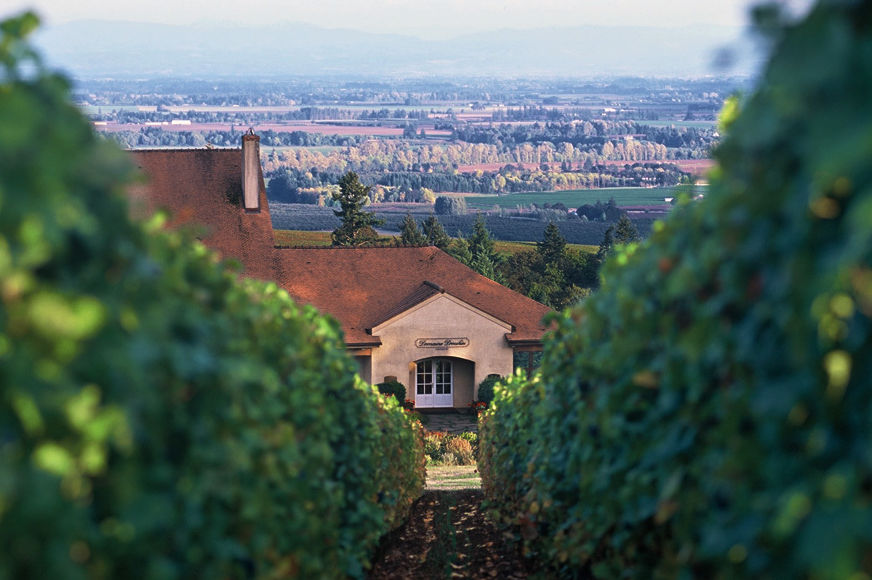Vine Dedication

Image: Michael Novak
Late last September (or thereabouts), not long before the Willamette Valley grape harvest usually begins, local meteorologists delivered some unwelcome news: A deluge was coming, one that would last up to two terrible weeks. At this crucial moment in the growing season, rain can unleash a viticultural version of the Ten Plagues on vineyards, and it’s not an exaggeration to say that when winemakers got the news, the whole of the Willamette Valley wine region pretty much freaked out.
An overabundance of precipitation not only dilutes the flavor of the grapes, but can make fruit swell until it bursts—which attracts swarms of bees and yellow jackets, which can infect those red and white orbs of juice with harmful bacteria. If grapes stay wet, whole vineyards can succumb to mildew. From Portland, you could practically feel the stampede of pickers as they made a dash for the vines. Winery owners sweated. Winemakers fretted.
It was in the midst of all this panic that I happened to pay a visit to the Carlton Winemakers’ Studio, a gargantuan cooperative winemaking facility. That very day the studio’s founder, 43-year-old Eric Hamacher, was trucking in his first load of pinot noir grapes. Although de-stemming lines were in full swing, although more trucks laden with fruit were due to arrive, although a sweat hung on his brow, Hamacher stopped to talk to me, a stranger in his tasting room—not for 3 minutes but for 30.
The subject, of course, was the weather. How the rains forced him and his workers to spend three weeks cutting leaves off the vines, so that the wind could dry out the grapes. How down in California, where the sun dutifully shows up for work each morning, winemakers don’t have to worry about mercurial weather. How Oregon winemakers have had to learn to be hardier in order to coax flavor from their grapes. “In the Willamette Valley, we’re making wine on the viticultural edge,” Hamacher said. I left with six of his bottles.
To my mind, it’s people like Eric Hamacher who provide the best argument for exploring our state’s vast wine country. For they take the time to teach us that what we taste in a glass of Oregon wine is much more than the wine itself—it’s a way of life and a commitment to place. We’re confident that this month’s cover story (“The Insider’s Guide to Oregon Wine Country”)—written by food and drink editor Camas Davis and guided by the expert palate of our wine critic, Condé Cox—will lead you to a similar conclusion.
And don’t fret about the 2007 vintage: Some grapes did burst, but an unseasonal period of cold kept wasps at bay, and winds prevented any pesky mildew from forming. In fact, Hamacher predicts that 2007 will be known for wines “with elegance, grace and balance.” Precisely the kind of poise required to weather any storm—poise that has earned Oregon winemakers a reputation for being among the most talented in the world.

